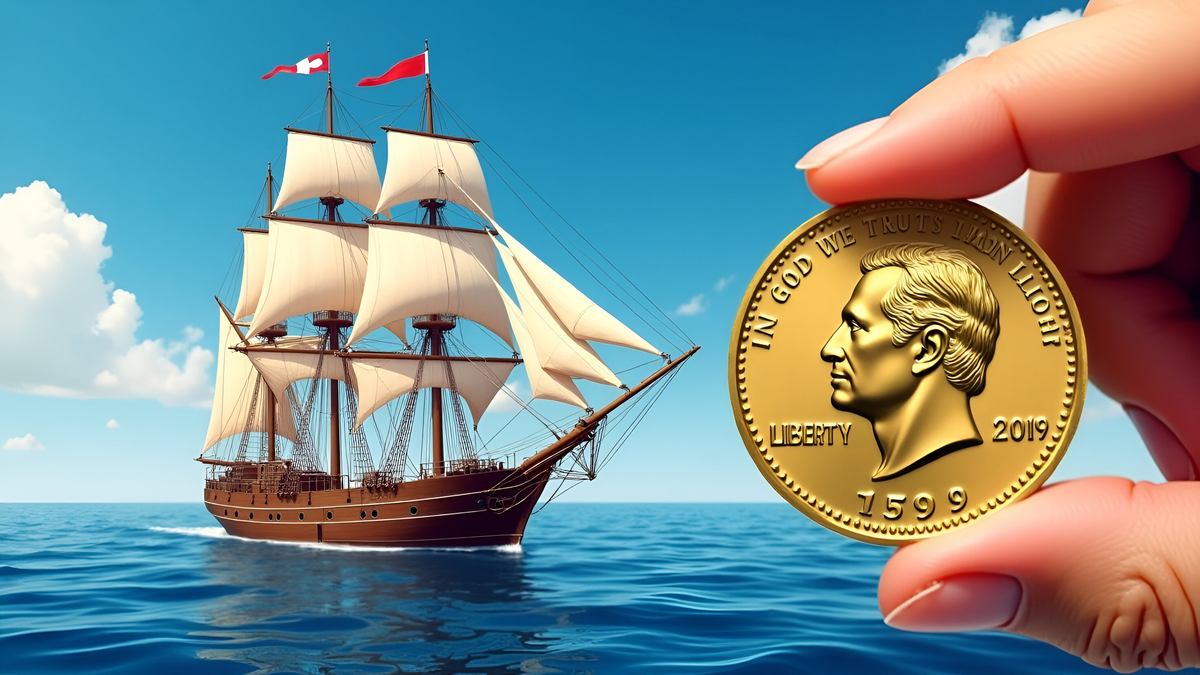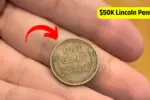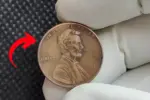Coin collectors and numismatics enthusiasts worldwide were recently stunned by the valuation of a rare Bicentennial Quarter, which was appraised at an astonishing $36 million. Known for commemorating the United States Bicentennial in 1976, this quarter has shocked the coin-collecting community with its historic significance and unprecedented value. How can a seemingly simple piece of currency command such a monumental price? This rare Bicentennial Quarter has an extraordinary story that combines history, craftsmanship, and scarcity, turning it into a treasure that collectors dream of finding.
What Is a Bicentennial Quarter?
The Bicentennial Quarter was minted in 1975 and 1976 to celebrate America’s 200 years of independence. Unlike standard quarters, these special coins feature a unique design that pays tribute to the nation’s founding.
Key Features
- Obverse: The front of the coin showcases President George Washington, a design consistent with standard quarters.
- Reverse: The back of the Bicentennial Quarter is where the difference lies. Instead of an eagle, it depicts a colonial drummer alongside a torch surrounded by 13 stars, symbolizing the original colonies.
- Dual Date: Bicentennial Quarters are inscribed with the dates 1776–1976, marking the anniversary of the Declaration of Independence.
- Materials: These quarters were produced in both standard copper-nickel and 40% silver versions for collectors.
Why Is This Bicentennial Quarter Worth $36M?
While Bicentennial Quarters are common, certain versions stand out for their rarity and unique features. The $36 million valuation was attributed to one particular coin that possesses exceptional qualities.
Factors Contributing to Its Value
- Minting Error: This specific quarter reportedly has a rare minting flaw that makes it one-of-a-kind.
- Material Composition: Produced with a high-purity silver planchet instead of the typical alloy, its unique metal composition added to its rarity.
- Condition: Graded as nearly flawless, its pristine state enhances its collectible appeal.
- Historical Significance: As part of America’s Bicentennial celebration, this coin represents a monumental moment in U.S. history.
- Scarcity: There is believed to be only one such coin with this combination of features, making it the “holy grail” for collectors.
The Role of Coin Grading
In the numismatic world, coin grading is crucial to determining a coin’s value. The Bicentennial Quarter valued at $36M received one of the highest grades possible from PCGS (Professional Coin Grading Service), a leading authority in coin certification.
Grading Criteria
- Surface Quality: Coins free of scratches, dents, or discoloration score higher.
- Strike Precision: Well-defined details and clear engravings indicate higher craftsmanship.
- Eye Appeal: Coins that are visually attractive have greater desirability among collectors.
- Rarity: Uncommon features or minting errors substantially increase a coin’s grade and value.
Historical Significance of Bicentennial Coins
Commemorative coins often hold greater appeal due to their connection to significant historical events. The Bicentennial Quarter is no exception, as it was created to honor America’s founding and celebrate 200 years of freedom.
Cultural Impact
- Patriotic Symbolism: The colonial drummer and torch evoke the spirit of revolution and independence.
- Public Enthusiasm: During its release, Bicentennial coins sparked widespread interest among Americans eager to own a piece of history.
- Collector Demand: Over the years, these coins have gained enduring popularity, especially among history buffs and numismatics enthusiasts.
Turning Coins Into Treasures
The $36M Bicentennial Quarter reminds collectors of the potential hidden in everyday coins. Many rare and valuable coins start their journey as simple pieces of currency, only to transform into treasures due to unique circumstances.
How to Identify Valuable Coins
- Examine the Design: Look for engravings, symbols, or details that differ from standard versions.
- Inspect for Minting Errors: Off-center stamps, double strikes, or unusual materials can add value.
- Check the Date: Special commemorative dates often indicate collectible coins.
- Assess the Condition: Coins with minimal wear are more likely to fetch higher prices.
- Consult Grading Services: Professional certification ensures accuracy in valuation.
The Thriving World of Numismatics
The discovery of the $36M Bicentennial Quarter sheds light on the dynamic and exciting world of numismatics. Collecting coins is both a hobby and an investment, offering enthusiasts opportunities to explore history, art, and economics.
Why People Collect Coins
- Preserve History: Coins are tangible links to the past, capturing moments in time.
- Financial Investment: Rare coins often appreciate in value, making them lucrative assets.
- Cultural Connection: Coins reflect the societies and ideologies that produced them.
Popular Coins Among Collectors
- Commemorative Coins: Celebrate significant events or milestones.
- Error Coins: Unique minting mistakes create rarity and intrigue.
- Ancient Coins: Provide insights into ancient civilizations like Rome and Greece.
- Bullion Coins: Valued for their precious metal content.
Could You Own a Rare Coin?
The Bicentennial Quarter’s incredible valuation prompts the question: Could you own a hidden treasure in your collection? Many valuable coins are overlooked because their worth isn’t immediately apparent.
Tips for Discovering Rare Coins
- Search Your Change: Everyday currency could hold rare gems like commemorative or error coins.
- Inspect Heirlooms: Family possessions may include valuable coins passed down over generations.
- Learn About Mint Marks: A small symbol on a coin indicates where it was minted and can reveal rarity.
- Use Reference Guides: Books and online databases help identify potential treasures.
What’s Next for the $36M Bicentennial Quarter?
With its valuation creating buzz among collectors, the fate of the $36M Bicentennial Quarter remains uncertain. Will it be sold at auction, kept in a private collection, or displayed in a museum? Each option presents unique opportunities to appreciate its significance.
Options for Rare Coins
- Auction: Selling at a high-profile auction can generate significant public interest.
- Private Collection: Retaining the coin preserves its exclusivity and legacy.
- Museum Display: Sharing the coin with the public educates and inspires future generations.
Conclusion: Hidden Value in Everyday Objects
The $36M Bicentennial Quarter serves as a powerful reminder that extraordinary value can often be found in ordinary items. Coins that pass through our hands daily may carry untold stories and immense worth waiting to be discovered. This astonishing valuation underscores the importance of curiosity, research, and the ever-evolving world of numismatics.
For collectors and enthusiasts, the journey of uncovering rare coins is as thrilling as the treasures themselves. The Bicentennial Quarter’s story proves that history, art, and economics converge in fascinating and unexpected ways.
FAQs
1. Why is the Bicentennial Quarter worth $36 million?
Its rarity, minting error, unique metal, flawless condition, and historical significance make it invaluable.
2. How does coin grading impact value?
Higher grades, based on surface quality and rarity, significantly boost a coin’s value.
3. What are the key features of the Bicentennial Quarter?
It features George Washington on the front, a colonial drummer and torch on the back, and the dual date “1776-1976.”
4. How to identify valuable coins?
Look for unique designs, minting errors, good condition, and consult grading services for accurate valuation.
5. Why do people collect coins?
To preserve history, make investments, and connect with culture, especially rare or error coins.



